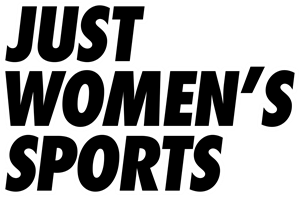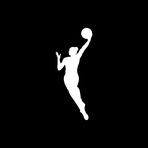The Gender Pay Gap in Professional Sports: A Closer Look
April 20, 2024, 9:34 am

Location: United States, California, Los Angeles
Employees: 11-50
Founded date: 2020
Total raised: $9.5M
The recent draft of college basketball star Caitlin Clark by the Indiana Fever has shed light on the stark difference in salaries between male and female athletes in professional sports. While Clark is set to earn a base salary of $76,535 in her rookie season, the top pick in the NBA draft is expected to make over $10 million. This glaring contrast has reignited the conversation about gender pay equity in sports.
The Numbers Game: A deep dive into the average annual salaries of top-paid players in Indianapolis' NFL, NBA, and WNBA teams reveals a significant disparity. Fever guard Erica Wheeler earns $222,154, while Pacers power forward Pascal Siakam takes home a whopping $34 million. Colts wide receiver Michael Pittman Jr. rakes in $23 million. The revenue gap between the NBA, which brings in over $10 billion annually, and the WNBA, with a projected revenue of about $200 million, plays a significant role in this pay divide.
The Revenue Share Conundrum: WNBA players face additional challenges due to their revenue share agreements, which differ from those of NBA players. While NBA players receive 50% of all revenue, WNBA players only receive 50% of the league's incremental revenue, which is contingent on meeting revenue targets set by the league. This discrepancy further exacerbates the gender pay gap in professional sports.
The Road Ahead: As WNBA players gear up for the upcoming season, they have the opportunity to renegotiate their union agreements in November. This presents a crucial moment for them to advocate for a fairer share, higher pay, and improved benefits. The WNBA season kicks off on May 14, with the Fever's first home game scheduled for a preseason matchup against Atlanta on May 10.
The Caitlin Clark Effect: Despite the challenges faced by female athletes in professional sports, the rise of players like Caitlin Clark signals a potential shift in the landscape. Clark's impressive college basketball career and marketability have already attracted lucrative sponsorship deals, hinting at a brighter future for women in sports. President Biden's recent comments on the issue underscore the urgent need for gender pay equity in sports.
The Bottom Line: While the gender pay gap in professional sports remains a pressing issue, the momentum generated by players like Caitlin Clark offers hope for a more equitable future. As the WNBA season approaches, all eyes are on the league to address the disparities and pave the way for fair compensation for female athletes. The time for change is now.
The Numbers Game: A deep dive into the average annual salaries of top-paid players in Indianapolis' NFL, NBA, and WNBA teams reveals a significant disparity. Fever guard Erica Wheeler earns $222,154, while Pacers power forward Pascal Siakam takes home a whopping $34 million. Colts wide receiver Michael Pittman Jr. rakes in $23 million. The revenue gap between the NBA, which brings in over $10 billion annually, and the WNBA, with a projected revenue of about $200 million, plays a significant role in this pay divide.
The Revenue Share Conundrum: WNBA players face additional challenges due to their revenue share agreements, which differ from those of NBA players. While NBA players receive 50% of all revenue, WNBA players only receive 50% of the league's incremental revenue, which is contingent on meeting revenue targets set by the league. This discrepancy further exacerbates the gender pay gap in professional sports.
The Road Ahead: As WNBA players gear up for the upcoming season, they have the opportunity to renegotiate their union agreements in November. This presents a crucial moment for them to advocate for a fairer share, higher pay, and improved benefits. The WNBA season kicks off on May 14, with the Fever's first home game scheduled for a preseason matchup against Atlanta on May 10.
The Caitlin Clark Effect: Despite the challenges faced by female athletes in professional sports, the rise of players like Caitlin Clark signals a potential shift in the landscape. Clark's impressive college basketball career and marketability have already attracted lucrative sponsorship deals, hinting at a brighter future for women in sports. President Biden's recent comments on the issue underscore the urgent need for gender pay equity in sports.
The Bottom Line: While the gender pay gap in professional sports remains a pressing issue, the momentum generated by players like Caitlin Clark offers hope for a more equitable future. As the WNBA season approaches, all eyes are on the league to address the disparities and pave the way for fair compensation for female athletes. The time for change is now.


